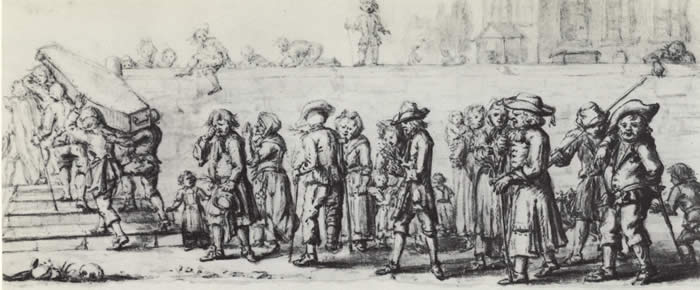
The Wellcome Trust Project: Death, disease and the environment: contextualising individual causes of death in London, 1747-1825
Director
|
Director |
Research Associate |
Research Fellow working on the Wellcome Project |

The project, funded by the Wellcome Trust, which began on 1 April 2007 and ran until March 2010 aimed to uncover the links between cause of death and the environment at the level of the street. We aimed to find out if the patterns of disease that researchers have shown to exist in 19th-century London and other 19th-century cities were also present in the eighteenth century. We also expect to be able to tests the notion that London was a national repository of infections using the migration data generated by our ESRC study.
The Sextons books for the Westminster parish of St. Martin-in-the-Fields (population c. 42,000 in 1725) give the name, sex, age and cause of death of all those who died in the parish from 1747. We propose to link this with the database we have created from the previous ESRC project recreating the life histories of 56,000 parish paupers who went into the workhouse at some stage of their lives between 1725 and 1825. Combined with a mapping exercise, this will enable us to examine patterns of mortality at the very local (often street or courtyard) level. We shall also, uniquely on this scale, be able to link the welfare and migration histories of many thousands of parish paupers with their ultimate cause of death. We will also be able to compare the mortality of parish paupers with the rest of the population and, by creating linkages with another database, compare these with the occupations and rateable values of the two-thousand strong Westminster electorate living in that parish. This will overcome the usual pre-modern lack of individual context. This methodology will allow us to observe closely the characteristics of the pre-Victorian epidemiological regime and bring us nearer to an examination of mortality by social class than has hitherto been possible.
This website is maintained by jeremy.boulton@ncl.ac.uk